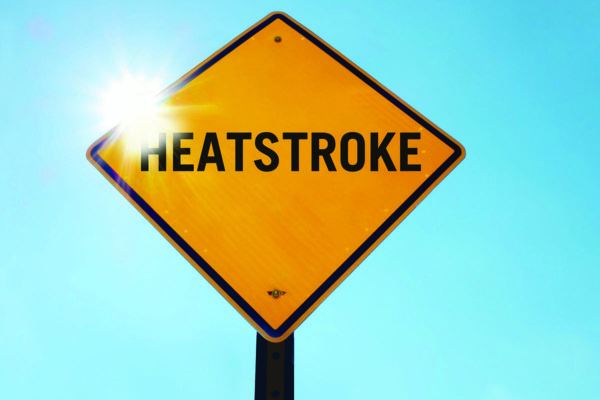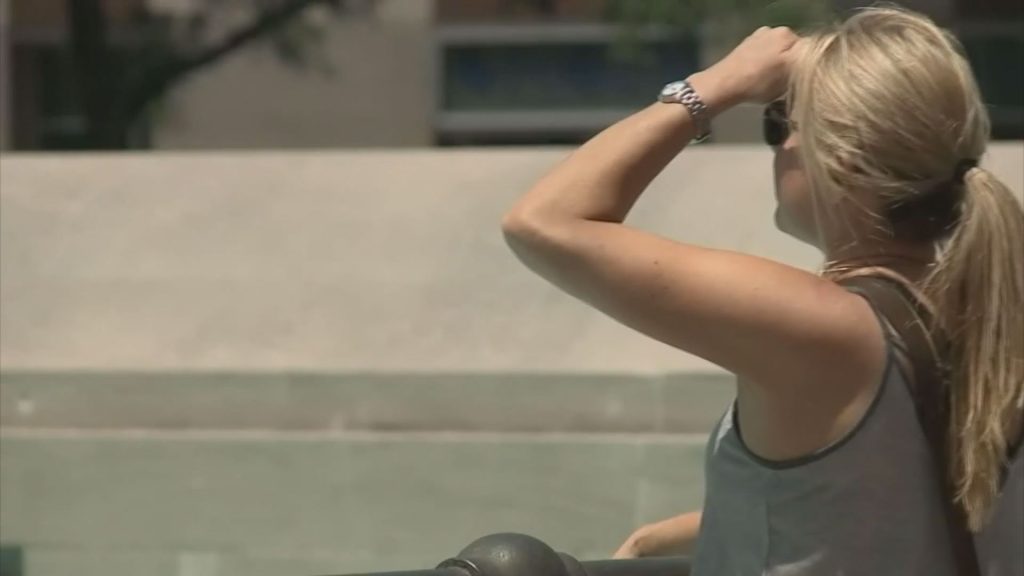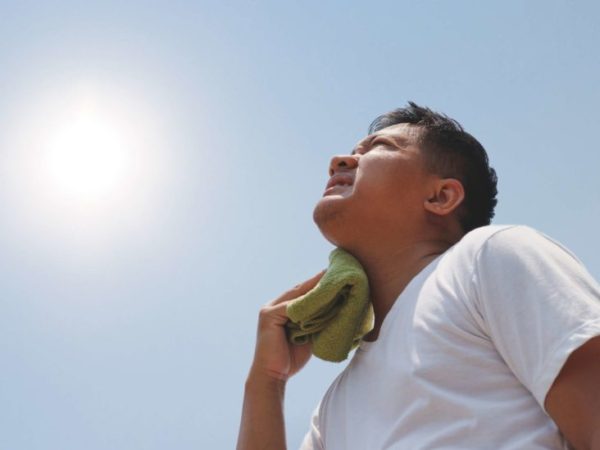Heatstroke (also called malignant hyperthermia) refers to a failure of the body’s mechanisms to control the temperature. It occurs after long exposure to heat or prolonged efforts in a hot and/or humid environment. This heat-related discomfort causes dehydration and an increase in the body temperature of the person.
Heatstroke can occur at any age, but especially to:
- Sportsmen; Obese people (most affected by heat-related phenomena)
- People sensitive to sudden temperature changes: old people, children, etc.
Causes and Risk Factors
Heatstroke, as the name suggests, occurs when temperatures are very hot. Living in bad weather, for example, in a place where pollution is high, increases the risk. We speak of classic heatstroke when discomfort is not related to physical exercise. The victims are mostly the elderly, young children, and people in poor health. On the other hand, the heatstroke associated with exercise particularly affects sportsmen who exercise when the weather is very hot. Workers who are physically demanding in full sunlight are also at risk.
The heat equation + inability to rehydrate can lead to heatstroke in people at risk. This is when body fluids lost due to heat have not been replaced after a few days or even a few hours for people practicing a sport, that discomfort may appear. The use of alcohol or drugs increases the risk of heatstroke, as are eating disorders such as anorexia or bulimia. People with heart disease, Parkinson’s disease, obesity, or poorly controlled diabetes are at higher risk. The use of certain diuretic or vasoconstrictor drugs may increase the risk. It is important to talk to a doctor or pharmacist, especially if you have other risk factors.
Main symptoms of heatstroke
- The person suffering from heatstroke typically suffers from confusion
- Loss of balance, headaches and can go as far as losing consciousness.
- The skin is red, hot, and dry. It is one of the characteristics that make it possible to differentiate heatstroke from the simple exhaustion linked to the heat, Which causes excessive sweating. In the case of heatstroke, there is no sweat. Since the body makes every effort to keep the little liquid that remains. In doing so, it is no longer able to cool.
- The pulse is very fast, as is breathing. The internal temperature, which is obtained by using a rectal thermometer, is very high, often exceeding 40°C.
- A high temperature that lasts for a few hours will quickly damage the internal organs,
- Sometimes causing death or at least severe permanent damage.
- Blood pressure may drop dramatically. The cardio-respiratory arrest may occur.
The diagnosis is easy to establish. If the subject presents symptoms in the above list. In addition to being at risk due to your activities or fitness. One can easily conclude that heatstroke has occurred and it is necessary to act quickly to avoid potentially dramatic complications.
In the case of heatstroke
Could you recognize the signs of heatstroke – on you or someone else? Knowing when to seek medical assistance is crucial. At the slightest sign of confusion, if it is very hot, you must absolutely lower the internal temperature of the victim by guiding it to a cooler area. It is vital to make the patient drink water and release his clothes to allow his body to evacuate the heat while applying cold compresses on as much skin as you can.
Risk of heatstroke if you wear too many clothes
Dark, thick clothes are likely to make your temperature rise and forget about very tight clothing if you are exercising outdoors. “Light, loose clothing is a must if you’re active and hot,” Tight clothing can be an obstacle to sweat evaporation, a phenomenon whereby the body cools and which, if upset, can cause a dangerous rise in the temperature of your body.”
Risk of heatstroke if you do not use sunscreen
We know that we need to apply sun protection to our skin in the summer – undo those prejudices about sunscreen. This is essential because burns increase the risk of heatstroke. Take sunscreen with an SPF (seasonal protection factor) of 30 or more. To be sure that you enjoy maximum protection, you must apply thirty grams (the equivalent of glass to shoot). Studies show that most people only use half or even a quarter of this amount, which means that the FPS they have on the body is less than what the tube says!
If you spend all day on the beach, you should use between a quarter and half a bottle of 240 ml (8 oz). Sunscreen should be applied about thirty minutes before sun exposure to allow the active ingredients to penetrate the skin, and then it should be done every two hours or whenever you bathe, wipe or sweat profusely.
What to do in case of heatstroke?
- If there is a suspected heat stroke, emergency services should be contacted urgently. While awaiting the arrival of the relief, it is necessary to take all the necessary means to refresh and rehydrate the person suffering from heatstroke.
- If the person is conscious, it is lengthened by raising his legs; if unconscious, place him/her in the lateral position of safety to avoid choking.
- If possible, immerse the person in a freshwater bath (37.5 ˚C).
- You do not have a bath at your disposal, you can use a wet washcloth, or wrap the person in a blanket or towel soaked in cool water.
- If you have a fan at your disposal, use it.
- If the person is conscious, s/he should drink water in small sips.
- If the person is unconscious, avoid making him drink to avoid choking.
- It is, however, possible to moisten the lips with a wet washcloth.
- During this process, be vigilant. Indeed, the temperature of the victim can drop dramatically, resulting in hypothermia.
- Take temperature regularly and make sure it does not drop below 37.7 ˚C.
- If the person is shivering or the skin temperature appears to be normal, stop cooling measures.
- Monitor the vital signs of the victim and prepare for cardiopulmonary resuscitation as needed.
Did you know that…
- Even if insolation is much less severe than heatstroke, it should be treated quickly.
- Indeed, the sunshine can evolve rapidly to heatstroke!
- If you feel that your child or someone else is experiencing sunstroke (weakness, nausea, excessive sweating, mild fever), it is better to treat him/her quickly by putting them in the shade and making them drink.



